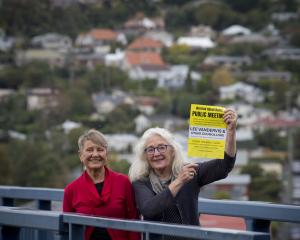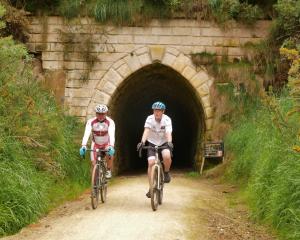A trial of new streetlights in South Dunedin has failed to impress the city's night sky proponents but residents say they are happy with the change.
As part of the tender process for the city's new LED streetlights the Dunedin City Council has trialled 20 new lights in Melbourne, Fawcett and Oxford Sts.
The trial began on November 8 to November 24 and tested three different LED designs.
Residents in Oxford St yesterday told the Otago Daily Times they felt the new lights were an improvement over the older sodium lights.
Resident Ann Flavell said there was less glare from the LEDs and they covered a much larger area.
''I was quite surprised because I was sitting in my lounge and looked outside over to my neighbour's house and it was incredible how much better I could see.''
Mrs Flavell said she had no trouble sleeping in the past four weeks despite the bedroom facing the road.
Other residents said the LEDs provided much better vision at night and made the area feel much more secure.
But the trial failed to impress Dunedin's Dark Skies group, which found the lights far too bright. It was also concerned about their impact on human and animal health.
Dark Skies member Mike Broughton said he visited the three streets on Friday about 10pm and said it was clear the LED lights were not fit for purpose.
While the shielding may have stopped the light leaking into the night sky, it failed to stop the light from encroaching into residents' properties, he said.
People had a right to total darkness in their homes and the three different LED lights used in the trial made that difficult to achieve, he said. There were much better LEDs already available or in development which could be adopted, he said.
The view of the dark skies group was the 3000 Kelvin lights used in the trial were unsuitable for a Night Sky city.
After the survey, Mr Broughton said he had trouble sleeping for the rest of the weekend because of his exposure to the lights.
Kelvin refers to the colour of the light emitted from the LEDs. A lower temperature light produces a warmer (yellowish) colour while a higher temperature produces a cooler (bluish) colour.
LED lights rated 3000K are considered a warm white light.
The night sky group had wanted softer coloured 2400K lights because of what they say is the growing evidence linking blue light emitted by higher Kelvin LED lights and serious health issues.
The council chose the 3000K lights as they provided enough light for motorists and pedestrians while still allowing the city to apply to become a International Dark Sky Reserve.
Public feedback on the trial closes on Saturday.
Comments
Warm light is always better. There is a reason by Apple iPhones and other offer a night mode; cold white keeps people awake.
Why are we reinventing the wheel? Would it not make more sense to have infrared sensors turning lights on when a person or car approached? PIR sensors are cheap and a bit of programming would suffice- (but then again I am not an electrician or at the DCC). This would massively cut electricity usage and lights would only be activated if someone/vehicle was close by to benefit from the light (just like my home).











